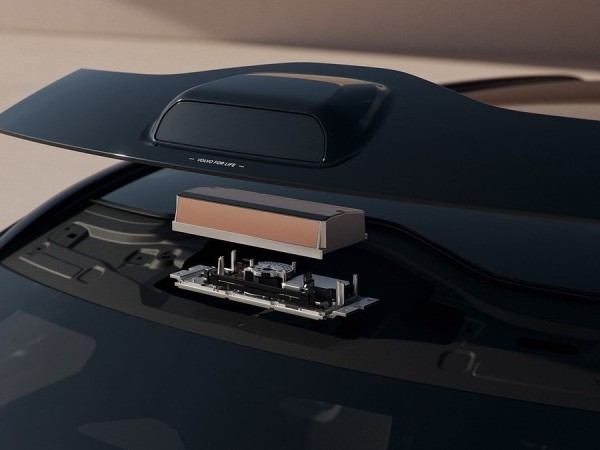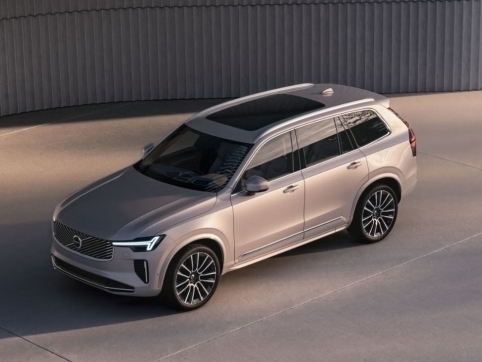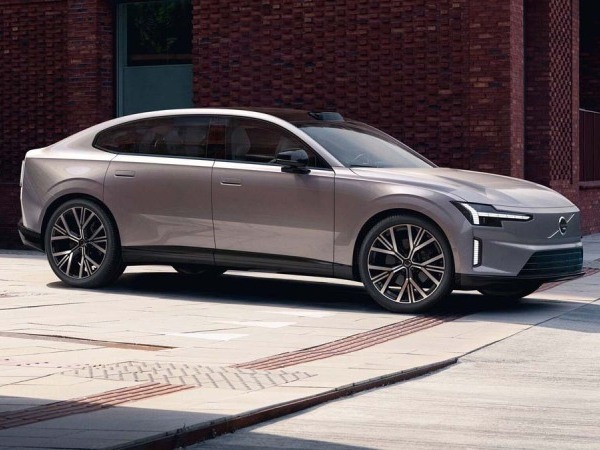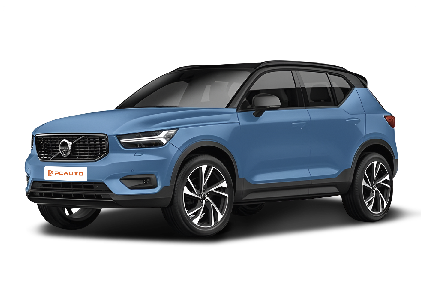Q
Is the XC40 a good family car?
The Volvo XC40 is truly an SUV that suits Malaysian families. It excels in terms of safety and practicality. The entire lineup comes standard with the City Safety system, which can effectively reduce the risk of collisions during city driving. It's a great choice for Malaysian consumers who prioritize family safety.
The XC40 has a compact body size, making it very suitable for the narrow streets and crowded parking lots in Malaysia. Meanwhile, its luggage compartment has a capacity of 460 liters, which is large enough to hold the luggage for a family trip.
In terms of power, the XC40 offers two power options, T4 and T5, both paired with an 8-speed automatic transmission. It can provide a smooth driving experience on Malaysia's mountainous terrain and highways.
It's worth mentioning that the interior of the XC40 uses eco-friendly materials, which is more family-friendly for those with young children. In Malaysia's hot climate, its efficient air-conditioning system and panoramic sunroof can enhance the riding comfort.
Although there are other excellent models in the same class, the XC40 is really worth considering due to Volvo's unique safety concept and Nordic design style. It is recommended that interested consumers visit local dealerships for a test drive to personally experience its driving feel and interior space.
Special Disclaimer: This content is published by users and does not represent the views or position of PCauto.
Related Q&A
Q
Is the Volvo XC40 a hybrid car?
The Volvo XC40 does offer a hybrid version. The XC40 Recharge sold in the Malaysian market is a plug-in hybrid electric vehicle (PHEV). It combines a fuel engine with an electric motor. With a pure-electric range of about 50 kilometers, it's perfect for short-distance commuting and can reduce fuel consumption, while still retaining the convenience of traditional power for long-distance trips.
In addition, the XC40 also has a pure-electric version (XC40 Recharge Pure Electric), which uses a fully electric drive system. However, it's important to note the differences in charging infrastructure requirements and driving experiences between hybrid and pure-electric models.
The Malaysian government offers tax incentives for hybrid vehicles. When making a purchase, you can consult the dealer for the latest policies. Volvo's hybrid technology emphasizes the balance between environmental protection and performance. The battery safety has undergone rigorous testing, making it a great choice for consumers who value sustainable travel.
If you're concerned about fuel consumption and emissions, the hybrid version is more cost-effective than the pure-fuel version. But you need to make your choice based on your budget and daily driving mileage. It's recommended to take a test drive to compare the handling experiences of the two power systems.
Q
Does the Volvo XC40 hybrid charge while driving?
The Volvo XC40 Hybrid is a plug-in hybrid electric vehicle (PHEV). It can indeed charge the battery during driving through regenerative braking and part of the engine's power. However, it's important to note that the efficiency of this charging method is limited and it can't fully replace plug-in charging. The regenerative braking system converts kinetic energy into electrical energy and stores it in the battery when braking or coasting, and the engine also provides some charging support for the battery during high-speed cruising.
Nevertheless, to get the best effect of electric energy replenishment, it is recommended to charge the vehicle regularly via an external power source to ensure the battery is in the best condition and to maximize the pure-electric driving range. For users in Malaysia, due to the hot climate, frequent use of the air-conditioning may affect the battery's range. Therefore, it's particularly important to reasonably plan charging and use the hybrid mode.
In addition, the hybrid system of the Volvo XC40 Hybrid is designed to balance environmental protection and performance, making it suitable for both city commuting and long-distance driving. But in daily use, it's still necessary to pay attention to battery maintenance and avoid keeping the battery at a low charge level for a long time to extend the battery's lifespan.
Q
Can I charge my Volvo XC40 at a Tesla charging station?
The Volvo XC40 comes in different powertrain versions. If it's not the all-electric version, there's no way to charge it at a Tesla charging station. For the all-electric Volvo XC40, it usually can't be directly charged at a Tesla charging station. This is because the Tesla charging connector and its standards differ from those of vehicles of other brands. The Tesla charging connector is unique to Tesla and is incompatible with the common charging standards followed by most automakers.
However, there are some adapter devices on the market, but these adapters don't always fit perfectly. Moreover, Tesla charging stations are mainly for Tesla owners, and their usage rules and network coverage prioritize Tesla vehicles. If you want to charge your Volvo XC40, it's recommended to use the charging network designated by Volvo or public charging facilities to ensure safe and smooth charging.
Q
Can I charge my Volvo XC40 at home?
Yes, you can charge your Volvo XC40 at home. If your Volvo XC40 is a pure-electric model, it supports home charging. You can use an 11kW home AC charger. For instance, it takes around 8 hours to charge the battery from 0 to 80% capacity with this charger.
We recommend installing a Volvo Cars wall-mounted charger. It offers faster and more efficient charging compared to a regular wall socket. The wall-mounted charger comes with an integrated cable holder and a 5-metre charging cable with a Type 2 socket (IEC 62196), making it compatible with all fully electric Volvo cars. You can install the wall-mounted charger either indoors or outdoors as it's water-resistant.
If you don't have a wall-mounted charger, you can also use a standard power plug to connect the vehicle to a power socket for charging, but the charging time may be longer. Just make sure to check the charging equipment before use to ensure safe charging.
Q
Can you put regular fuel in a Volvo XC40?
For the Volvo XC40, whether it can use regular fuel depends on the specific engine model. The XC40 sold in the Malaysian market mainly offers two petrol versions, T4 and T5. Both of these engines are designed to use RON 95 petrol (regular fuel in Malaysia). So, it's completely okay to use regular fuel without causing damage to the engine. However, it should be noted that long -term use of low-octane fuel may affect the engine's performance and fuel economy.
Volvo's engine technology has been optimized for different fuel octanes and can automatically adjust the ignition timing to adapt to the fuel quality. But to achieve the best performance, it is recommended to use higher-octane fuel like RON 97 when conditions permit. The quality of petrol in Malaysia is strictly regulated, and both RON 95 and RON 97 meet international standards. Car owners can make a flexible choice based on their actual needs and budgets. Meanwhile, regular maintenance and using the fuel additives recommended by the original manufacturer can also help keep the engine in good condition.
In addition, although the engines of the Volvo XC40 are compatible with regular petrol, diesel-powered models (such as the D4) must use diesel. Mixing fuels will lead to serious malfunctions, which requires special attention.
Q
Is the Volvo XC40 self charging?
The Volvo XC40 offers various powertrain versions in the Malaysian market, including traditional fuel-powered models and plug-in hybrid electric vehicle (PHEV) versions. However, it's important to note that the XC40 doesn't have a true "self-charging" function. This term is commonly used to describe the ability of some hybrid models to charge the battery through kinetic energy recovery or the engine. In contrast, the plug-in hybrid version of the XC40 needs to be charged from an external power source to fully leverage its electric driving range advantage.
For Malaysian consumers, if you're considering energy conservation and environmental protection, the plug-in hybrid XC40 Recharge is a great option. It combines the flexibility of pure-electric driving and fuel power, making it suitable for both city commuting and long-distance driving. Meanwhile, Volvo has always maintained high standards in terms of safety and technological features. For example, it comes standard with the Pilot Assist driving assistance system and high-quality interior materials.
If you prefer a hybrid model that doesn't require charging, you can look into mild hybrid electric vehicle (MHEV) options from other brands, as the XC40 doesn't currently offer such a version. It's recommended that you thoroughly understand the characteristics of each powertrain type before purchasing a car and make a choice based on your driving habits and charging conditions.
Q
Can I charge my Volvo XC40 to 100%?
The Volvo XC40 comes in different versions. For example, the 2021 Volvo XC40 Recharge T5 R-Design is a Petrol Hybrid (HEV, MHEV) type, not a pure electric vehicle. So, there's no such thing as charging it to 100% in the conventional sense. However, if it's the pure electric version of the XC40, it can theoretically be charged to 100%. But from the perspectives of battery maintenance and actual use, you don't necessarily have to charge it to 100% every time. Frequently charging the battery to 100% may have a certain impact on the long - term battery life. Generally, charging it to around 80% - 90% for use helps to extend the battery's service life. In addition, factors such as charging speed and the power of the charging pile also affect the charging time. In short, the pure electric XC40 can be charged to 100%, but considering factors like battery health, you can flexibly choose the appropriate charging level.
Q
Does a Volvo XC40 have two batteries?
The Volvo XC40 usually comes with three batteries instead of two. The 48V battery is exclusive to the B-series models. It's located in the trunk and comes with a three-year warranty. The 12V battery is on one side of the engine compartment. It costs around 2000 at the 4S store and has a two-year warranty. It's mainly responsible for starting the vehicle, the start-stop function, and powering devices like the radio after the engine is off. The start-stop battery is located under the front left longitudinal beam in the engine compartment and has a three-year warranty. During vehicle startup or the instant of start-stop, it powers the CEM central electronic module, the ECM engine module, and the PSCM engine module, relieving the power-supply pressure on the 12V battery. Each battery has its own specific role to ensure the normal operation of various vehicle systems. Car owners should also pay more attention to the battery status during daily use to guarantee the vehicle's stability and reliability.
Q
Is the Volvo XC40 fuel efficient?
The Volvo XC40's performance in fuel economy is just average, specifically depending on the power configuration and driving conditions. The 2.0-liter turbocharged engine it is equipped with consumes approximately 7.5 to 8.5 liters per 100 kilometers in combined driving conditions. This is a mainstream level for a compact SUV. If you choose the plug-in hybrid version (such as the XC40 Recharge), it can achieve an all-electric range of about 45 kilometers, which is more suitable for short urban commutes and can significantly reduce fuel consumption. Malaysian consumers should note that the actual fuel consumption may be affected by road conditions, driving habits, and the frequency of air-conditioning use. For example, congested roads in Kuala Lumpur may increase fuel consumption by 10% to 15%. Among vehicles in the same class, Japanese hybrid SUVs may be more fuel-efficient, but the advantage of the XC40 lies in its Nordic-style safety features and environmentally friendly interior materials. It is recommended that before purchasing a car, you weigh the price difference between the fuel-powered version and the plug-in hybrid version based on your daily driving mileage. If your annual driving mileage exceeds 20,000 kilometers, the plug-in hybrid version will be more cost-effective in the long run. Additionally, the Malaysian government's tax incentives for energy-efficient vehicles (EEV) are also worth considering, and some XC40 models may be eligible for tax exemptions or reductions.
Q
Is the Volvo XC40 underpowered?
Whether the Volvo XC40 has insufficient power depends on the specific model and driving needs. In the Malaysian market, the XC40 offers two gasoline-powered versions, T4 and T5. The T4 is equipped with a 2.0-liter turbocharged engine, delivering 197 horsepower and 300 Nm of torque, while the T5 version boosts it to 247 horsepower and 350 Nm. It's more than enough for daily city commuting and highway cruising. Especially, the T5 version performs better in acceleration, taking only 6.4 seconds to go from 0-100 km/h. If you're looking for even stronger power, you can consider the plug-in hybrid Recharge model, which has a combined output of 262 horsepower.
Moreover, the XC40's 8-speed automatic transmission is tuned for smooth operation. Paired with the front-wheel drive or all-wheel drive system, it can adapt to various road conditions. For Malaysian users, its power performance is sufficient to handle steep slopes and long-distance driving in the tropical climate. Compared with luxury SUVs in the same class, the XC40's power parameters are above average. At the same time, it retains Volvo's consistent safety and environmental protection concepts.
It is recommended that potential car owners choose the appropriate version according to their budgets and driving habits and make an appointment for a test drive to experience the power response firsthand.
Latest Q&A
Q
How big is Myvi fuel tank?
As one of the most popular national cars in Malaysia, the fuel tank capacity of the Perodua Myvi varies according to different generations and versions. The standard fuel tank capacity of the current third - generation Myvi (from 2017 to present) is 36 liters. It features a lightweight resin fuel tank design, which balances the fuel storage needs and the vehicle's body weight.
The fuel tank size of this B - segment model matches the fuel economy of its 1.3L/1.5L engines. It can provide a cruising range of approximately 450 - 550 kilometers under combined driving conditions, making it suitable for urban commuting and short - distance trips. It's worth noting that the actual available fuel tank capacity might be slightly less than the nominal value. This is because about 5% of the tank space is reserved for fuel expansion as a safety measure.
For owners planning long - distance drives, it is recommended to use the fuel efficiency display function on the Myvi's dashboard to monitor fuel consumption in real - time. Also, it's advisable to develop the habit of refueling when the fuel gauge shows that there is about 1/4 of the fuel left. This can prevent the fuel pump from overheating and also help deal with the situation where gas stations are far apart in some remote areas of Malaysia.
Some comparable models in the same segment, like the Proton Iriz, have a 40 - liter fuel tank. However, the actual cruising range needs to be considered in combination with the engine efficiency. Thanks to Perodua's mature powertrain tuning, the Myvi always maintains a competitive edge in terms of fuel economy.
Q
Does Myvi use CVT?
Yes, the Perodua Myvi does use CVT (Continuously Variable Transmission) technology in some models, especially the newer ones. For instance, the third-generation Myvi, launched in 2017, and its subsequent versions are equipped with D-CVT (Dual Mode Continuously Variable Transmission) to offer a smoother driving experience and better fuel efficiency. CVT technology optimizes engine performance through continuously variable gear ratios. Compared with traditional automatic transmissions, it can adapt to driving conditions more flexibly, thereby enhancing overall driving comfort. However, earlier Myvi models may have used a traditional 4-speed automatic transmission. So, whether a specific model is equipped with a CVT needs to be confirmed based on the model year and configuration. For Malaysian consumers, the advantages of CVT lie in its smoothness and fuel - saving performance during city driving, which is very suitable for the common local traffic conditions. But if you're looking for more direct power feedback, some drivers may prefer the manual transmission version. If you're considering buying a Myvi, it's recommended to check the official specifications or consult a dealer to confirm the transmission type. You can also take a test drive to see if the actual performance of the CVT meets your driving preferences.
Q
What kind of gearbox is Myvi?
The Myvi is equipped with a Dual Mode CVT (D-CVT) transmission, which is a dual-mode continuously variable transmission. Compared with traditional CVT transmissions, it has an additional gear for high-speed driving, which helps the vehicle achieve better fuel efficiency.
In daily driving, this transmission drives the vehicle in CVT mode. Thanks to the operation of the steel belt, the vehicle moves smoothly and linearly, enhancing comfort. What makes the D-CVT special is that it automatically switches to the gear mode when driving at high speeds. Different from CVT transmissions of other brands, when driving at high speeds, the engine speed of vehicles with ordinary CVT transmissions will increase, the engine noise will get louder, and the fuel consumption will rise. Moreover, the power will decline after exceeding the maximum horsepower speed. However, after the gear of the D-CVT engages, the engine speed decreases, allowing the engine to maintain a reasonable speed and providing the vehicle with continuous and abundant power.
Q
Are Myvi and vios the same engine?
Some models of the Myvi and the Vios use the same engine. Daihatsu and Perodua have a joint - venture engine production plant in Negeri Sembilan, Malaysia, which provides power for multiple models including the Vios. Some models of the Vios and the Myvi are equipped with the 1.5L Dual VVT - i engine. This engine features high efficiency, reliability, and economy. Although its power is not extremely strong (the official 0 - 100km/h acceleration time of the Myvi 1.5 is 10.2 seconds), its low fuel consumption and durability are well - loved by consumers. However, these two cars have different positioning and market targets. Even if they share the engine platform, there are differences in vehicle tuning, configuration, and the overall driving experience.
Q
How many cylinders are in the MYVI?
As one of the most popular national cars in Malaysia, the engine configurations of the Perodua Myvi vary according to different years and versions. Currently, the mainstream models are equipped with two types of Dual VVT - i four - cylinder naturally aspirated engines, namely the 1.3L (1NR - VE) and 1.5L (2NR - VE). Therefore, all Myvi models feature a four - cylinder design. This four - cylinder layout ensures smooth power delivery while taking fuel economy into account, making it highly suitable for the urban road conditions in Malaysia.
It's worth mentioning that four - cylinder engines, due to their simple structure and low maintenance costs, are widely used in B - segment models in the local market. For example, the Proton Saga and Honda City also adopt a similar layout. The 1.5L version of the Myvi can output 102 horsepower and 136 Nm of torque. Coupled with its lightweight body design, it can offer a well - balanced performance whether driving on the congested streets of Kuala Lumpur or cruising on the highway.
For readers who want to learn about engine technology, they can note that the Dual VVT - i system used in the Myvi can intelligently adjust the valve timing. This technology shared by Toyota helps to improve fuel efficiency by about 15%. That's why the Myvi has remained one of the most fuel - efficient cars in Malaysia for years.
View MoreRelated News

Warning: Vehicle LiDAR Can Damage Your Phone Camera!
AshleyMay 19, 2025

Well-Planned Space: The Exceptional Practicality of the Volvo XC60
Kevin WongMay 16, 2025

Volvo EX90 Electric SUV Now Available – RM 442,888
LienApr 11, 2025

Volvo XC90 Facelift Launched in Malaysia with Exterior and Interior Changes
JohnApr 11, 2025

Volvo's first pure electric vehicle using 800V technology, the fastest and furthest electric vehicle in Volvo's history
RobertMar 7, 2025
View More


















Pros
Cons